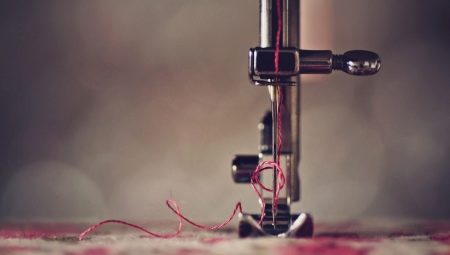The quality of the seam mainly depends on the tension of both threads in the mechanism of the sewing machine. It is worthwhile for the threads to stretch more weakly or more strongly, in the first case, the stitches sag, in the second - the threads, especially the lower ones, are torn, and work with a seam often goes down the drain. This is unacceptable when performing “facial” seams. Therefore, the correct adjustment of the threads in the sewing mechanism is so important.
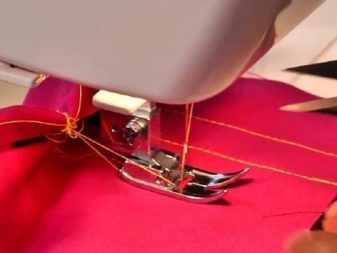
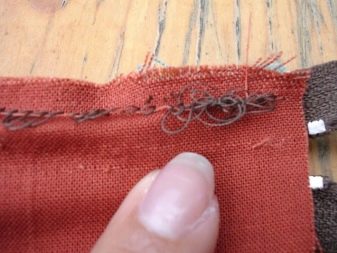
The device and principle of operation of the regulator
The regulation system, the sewing controller, the thread tensioner - this is all the name of the same mechanism that is responsible for the beauty and evenness of the seam. If the condition of the device is malfunctioning, this causes malfunctions in the sewing of seams, namely: the threads break, nodules form, the stitch may loop. Sometimes the lower thread breaks up, they can change places from the upper one, the fabric in the seam area becomes overtightened. But disassembling and assembling household and industrial machines is not too complicated.
The adjustment of the upper thread tension on old sewing machines is carried out by means of compression washers.
They are spring-loaded, adjusted using a nut on a fixed bolt or by means of a movable screw. The screw (or bolt with nut) also carries the tensioner itself - so that all its parts are not lost.
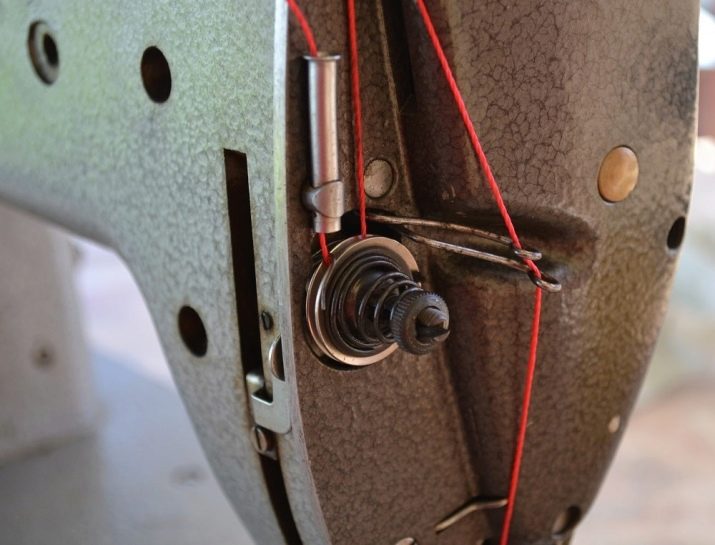
So, on typewriters of the “Seagull” brand, the screw holding the tensioner is fixed directly on the case. He is a frequent culprit in failures in laying perfect joints. The plastic case of the tensioner “slides” to the side due to the vibration generated by the machine during intensive operation of the needle bar and the shuttle. The tensioner itself may fall out of its docking place. You can reduce the pulling of the upper thread on the "Seagull" using an elongated bent pin.
But in modern models of Russian production, the tensioner is fixed more practical. It is not repairable - but its reliability is far ahead of tensioners on typewriters such as "The Seagull" and Singer. It is enough just to clean it from the villi left by the moving thread. It is easy to lift its squeezing plate-shaped washers by placing a screwdriver between them. With the help of a toothpick or a toothbrush, the hair that has accumulated on them is removed in seconds.
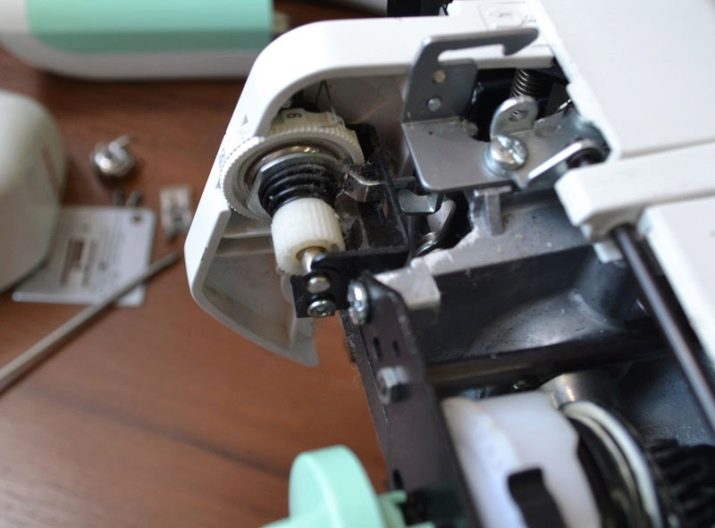
Tensioner for a more compact modern overlock sewing machine requires more regular cleaning.. This type of machine is used so often (and for a long time) that almost 100 km of thread passes through the tensioner. The filament “garbage” coalesces, and the tensioner works noticeably worse, which cannot but negatively affect the quality of new seams and patterns. The tensioner does not contain washers compressing the thread, and its maintenance consists only in blowing its clamping part.
Industrial sewing machines have a tensioner similar in design to the same in household machines.
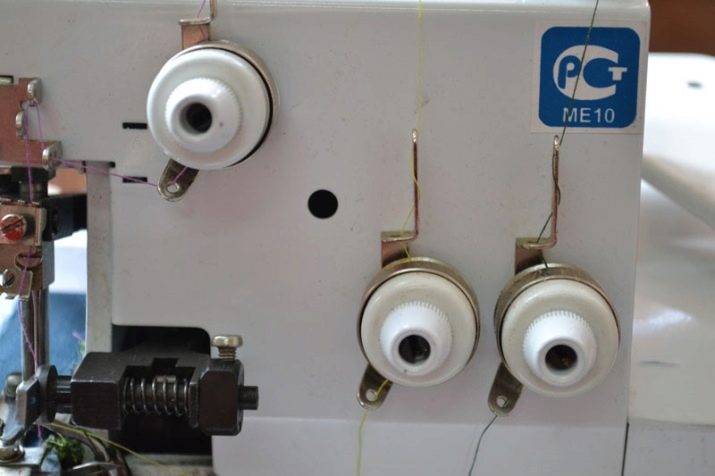
How is the adjustment
Before you begin to fine tune the upper and lower threads, it is recommended to perform a test seam on an unnecessary flap of matter. Carefully inspect the stitches just released from under the needle. If there are defects, but they are small, use a magnifying glass. Normally, properly configured equipment allows you to get a perfect seam on both sides of the fabric. In the event of a tensioner problem, the threads may overstress the fabric, or the stitches sag, not ensuring reliable stitching of the material.
If there are no such defects, continue sewing - the machine works perfectly and without your intervention in adjusting the tensioner.
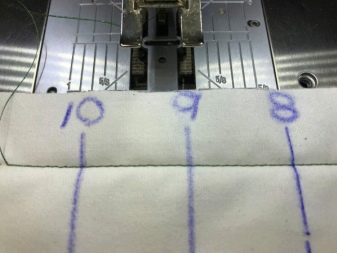
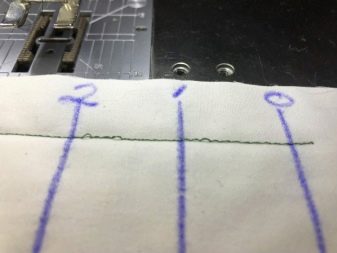
If you still didn’t like the quality of the seam, always know that one thread after another will be effectively hidden between the layers of stitched material. Wrinkles on a single layer of fabric are no longer formed here. The fact is that the tension of the threads is so arranged that one thread pulls one upon another when it is opened. Another starts for the first in the same way. With equal tension, the seam is ideal. However, one of the threads should be pulled longer - it will stretch the other onto itself, and the layers of fabric will also be pulled. The principle is as follows: when the points of pulling the lower thread from above appear, the upper one is stretched excessively; the converse is also true.
Be sure to check that the machine is working smoothly and clearly. Threads should be threaded into the machine strictly according to the instructions. The bobbin must not lock itself spontaneously or slip out during the operation of the machine. Tensioners must be clean. The presser foot, needle, guide, tension lever, hook, bobbin holder and needle bar mechanism should be free of chipping, chipping, excess bumps and concavities, which are not ideally provided. Any one damage - and the thread may be overtightened.
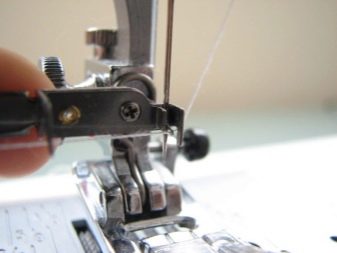
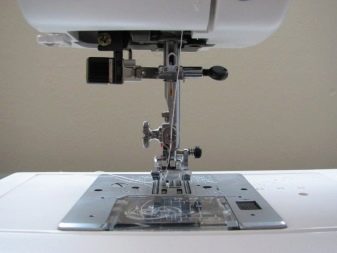
Make sure that the thickness of the thread matches the thickness of the fabric.
It is not recommended to use cotton thread. Threads are the best option. from any synthetic fiber: nylon, nylon, polyamide, silk, polyester and others. The needle should not be too thin - an attempt to pierce one or more holes for stitches in an excessively thick and coarse fabric will immediately damage it. Using stitches less than 1.5 mm in length will immediately impair the quality of the seam, and the fabric will be washed under the needle plate of the stapler.
And now let's proceed directly to the configuration. Find the upper thread tensioner adjuster. If this is your first experience refer to the instructions that came with the kit. For cars bought from hand, which did not have a user manual, a quick tip is the handle with the numbers printed on it.
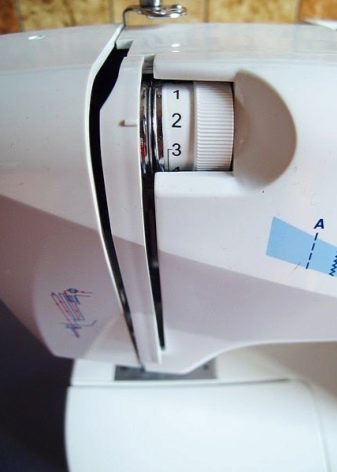
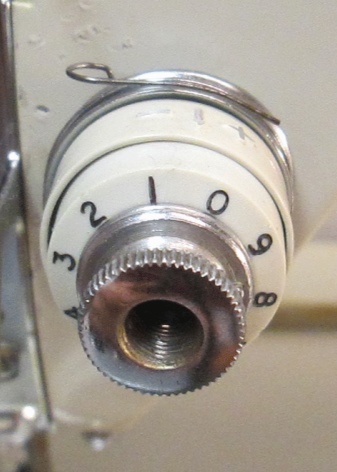
The amount of tension increases as you turn the knob to the "big" side.The division price is half the distance between the numbers. After each change in the amount of tension, perform a test seam until the sagging threads or pulling the fabric is eliminated.
Your goal is to get the lower and upper threads to balance each other. This remotely resembles the calibration of weights without an arrow, where the weighing of the consignment of goods sold was achieved by balancing it with the corresponding weights. The lower thread should not creep up - that's when the seam is considered ideal. In contrast to adjusting the tension of the upper thread, the adjustment of the lower tensioner is no longer carried out with the help of the regulator.
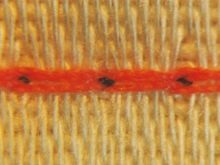
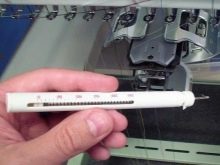
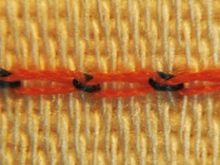
In the primitive case, adjusting the tension of the lower thread is done by hanging the shuttle by the end of the thread coming out from under the bobbin case. If there is no unwinding of the thread from the bobbin under the weight of the hook hanging on it, loosen its tension. With quick unwinding of the thread, the tension, on the contrary, is weak. Ideally, the hook suspended on the thread should move a few centimeters - but not lower until the thread runs out on the bobbin.
The tension is regulated using a peri-shutter screw: with a screwdriver, it is twisted clockwise to increase tension, and vice versa - when it is loosened.
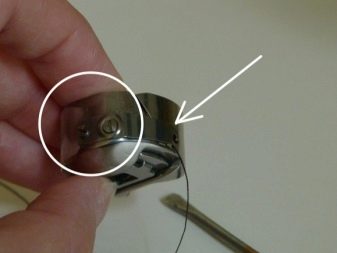
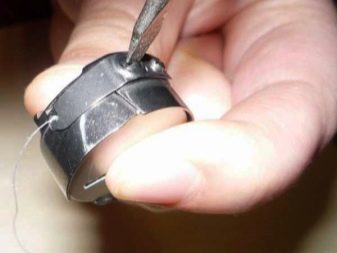
If the shuttle is not removable - after tightening the screw it is necessary to perform a test seam.
The result of fine-tuning the thread tensioners is the perfect seam. You can get to work. Machine setup is complete.
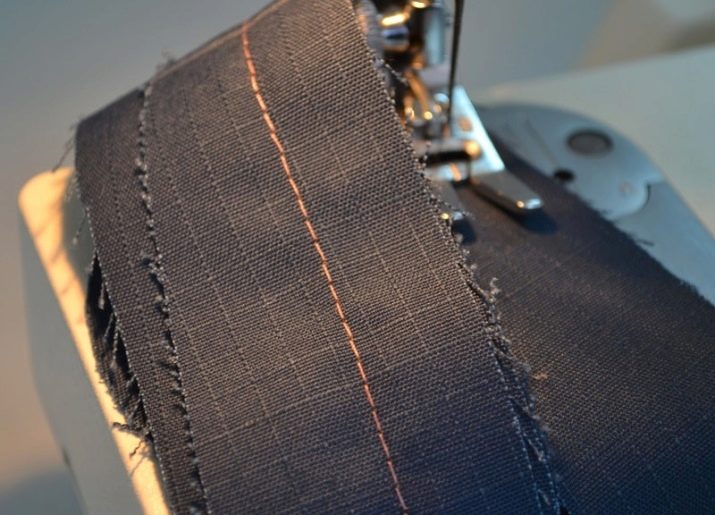
Useful Tips
The tips below will help you avoid wasting time on reconfiguring the machine, and with them - and emerging problems in the operation of the device.
- Before starting the next seam, do not forget to take the ends of the upper and lower threads away from you. So you will not allow unnecessary weaving of threads. Beginners often make such a mistake for the first time.
- To quickly detect problems with the evenness of the test seam, it is recommended to use threads of different colors that contrast with the color of the fabric. But directly in your main work you will need threads of similar rather than sharply different colors.
- For each type of fabric and thread of different thicknesses, it will be useful to record the exact settings of the tensioners. This will allow you to set up the machine for the upcoming work in less than a minute and, without wasting time, immediately start sewing.
- The tensioners must be set up from the top, not the bottom.
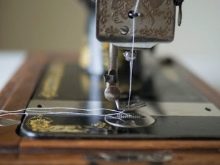
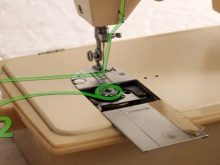
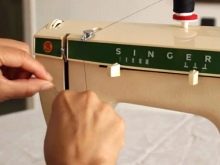
Possible problems and solutions
Weak thread tension can be the result of a number of reasons.
- The tension holding springs weakened or broken over time. Washers cannot connect to each other - there is no necessary effort. It is recommended to replace the springs.
- The thread often breaks, becomes frayed. There may be nicks on the washers themselves. This is unlikely - the steel is unable to deteriorate due to friction against “plastic” or natural threads, rather, the problem is that these washers are oxidized. On the shuttle tensioner, excessive thread tension may result from damage to the bobbin, its cap or the shuttle itself.
- The upper thread is also stretchedwhen the tension lever, thread guide, bleeder loop on the needle bar or eye of the needle are damaged in the same way.
- Entanglement, stalling of threads on the spools when manually unwinding and reeling them, notches on the spool itself can also lead to the thread not being unwound. In the latter case, this happens when almost the entire spool or bobbin is used up, or the thread was wound onto a bobbin by hand, in bulk, and not neatly on the “winder” of the machine.
- The machine itself may not provide adequate speed. Most often this happens when the engine or mechanism is worn out, the device does not give the required torque, or the supply voltage drops sharply in the network. At the same time, initially correctly configured tensioners turned out to be very “tight” in these conditions, and they urgently need to be reconfigured.However, working on a failed machine is very problematic. It is recommended to give it to the repair master for repair. If the product is so worn out that it cannot be repaired or there were no spare parts for it (they have long been discontinued) - it is recommended to replace the entire device.
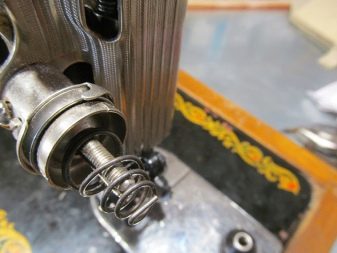
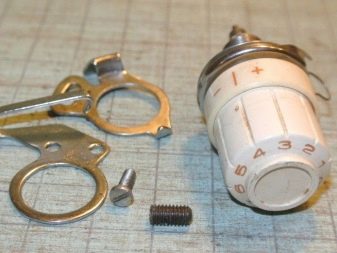
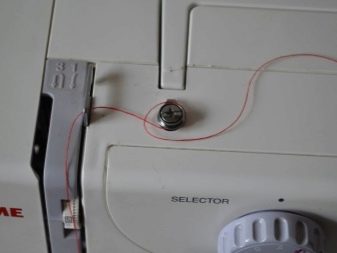
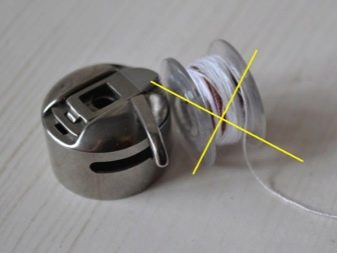
After eliminating all these reasons by the method of exclusion, your device will work again normally.
Correct the wrong thread tension, adjust the tensioners re-work is not difficult. It is important, if you still don’t know something, seek the advice of an instruction or an experienced seamstress who has gone through similar difficulties.
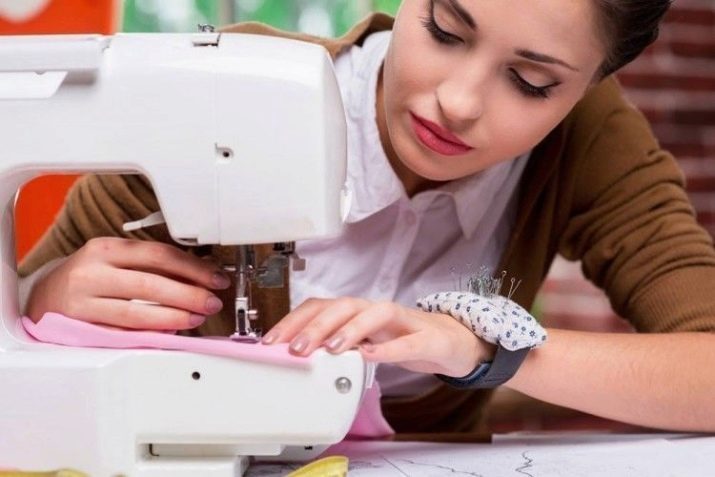
The secret to perfect thread tension is revealed in the video below.
